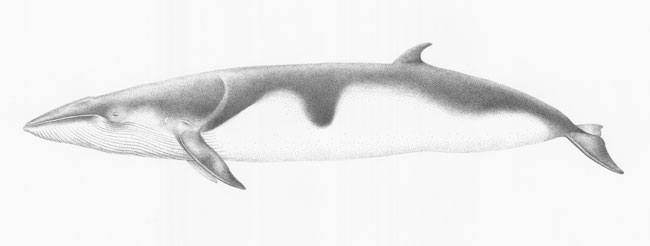
Antarctic Minke Whale by Rachel Hardman
Minke Whales
Minke Whales are one of the smallest and most abundant of the baleen whales. Only the Pygmy Right Whale are smaller.
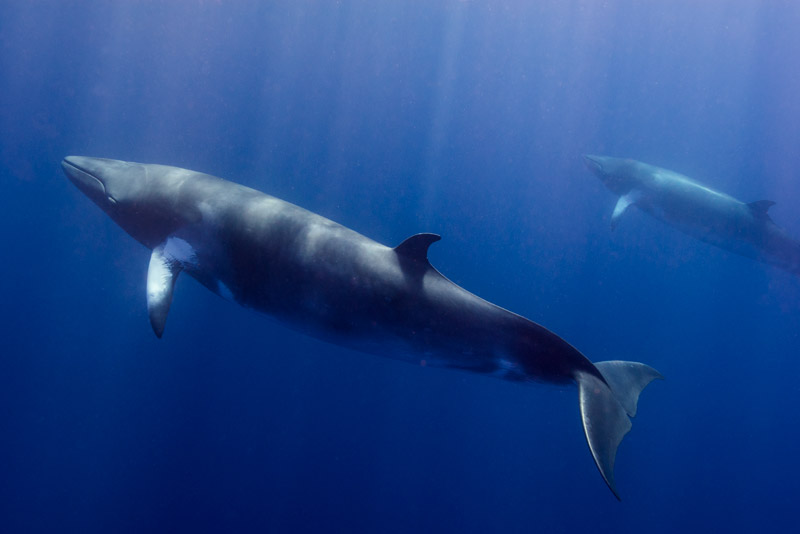
Dwarf Minke Whales
There are considered to be two species of Minke Whales, the Common or Northern Minke whale (Balaenoptera acutorostrata) and the Antarctic or Southern Minke whale (Balaenoptera bonaerensis) which was recognised as a separate species in 2001.
Further to this the Common Minke whale has been divided into several subspecies, the North Atlantic Minke whale, the North Pacific Minke whale. There is also the Dwarf minke whale which is currently regarded as an undescribed subspecies of Common Minke whale (Balaenoptera acutorostrata). The Dwarf Minke whale was first described by PB Best in 1985 and given its name by DW Rice (Marine Mammals of the World) in 1998. There is ongoing debate about the Dwarf Minke being a third separate species or not.
All Minke whales are part of the Rorqual family which also includes Humpback, Fin, Sei, Bryde’s and Blue whales.
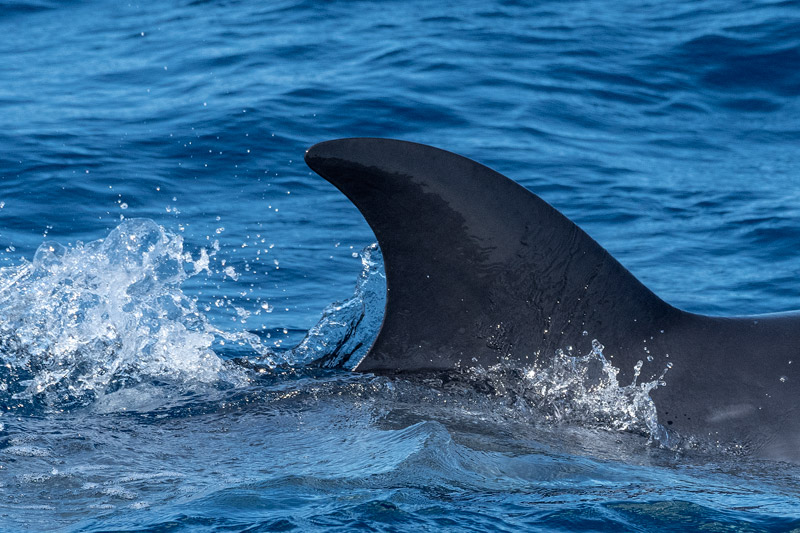
Dwarf Minke Whale
Conservation Status
At Risk
Length
Dwarf Minke new-born calves up to 2 metres, Adults under 8 metres.
Antarctic Minke new-born calves up to 2.8 metre, Adult Females up to 11 metres, Adult Males up to 10 metres.
Weight
Birth weight for Dwarf Minke is thought to be less than 1 ton. Birth weight for the Antarctic Minke is possibly closer to 1 ton. Adults weight around 4 to 5 tons but may be up to 10 tons.
Breeding
Minke whales reach sexual maturity when they reach 6 to 6.5 metres for Dwarf and 8 metres for Antarctic, this is at about 6 to 8 years and are thought to live up to 60 years. They are thought to breed every second year. Gestation lasts 10 months. Birth weight is about 1 ton. Calves are thought to be weaned by 6 months of age.
Diet
Fish, krill and/or other crustaceans.
Description
Minke whales are fast, active and highly manoeuvrable whales. They trend to surface nose first with a small bushy blow on two metres high. In short bursts they can travel at almost 40kmp and have been known to create an almost roster tail like wake. When preparing to deep dive the will expose and arch their backs with Dolphin like fin but do not raise their tails from the water. They can dive for up to 20 minutes.
Minke whales have the most complex and colourful markings of any of the baleen whales made up of white, light and dark grays.
The easiest way to distinguish between the Antarctic and Dwarf Minke is the difference in markings.
Dwarf Minkes have
A white shoulder blaze (dark at the tip of peck fin and completely white where fin joins body).
They have a triangular shaped thorax patch extending up from the peck fin and shoulder.
A dark band extends down the neck between the mouth and peck fin which continues down the sides onto the throat.
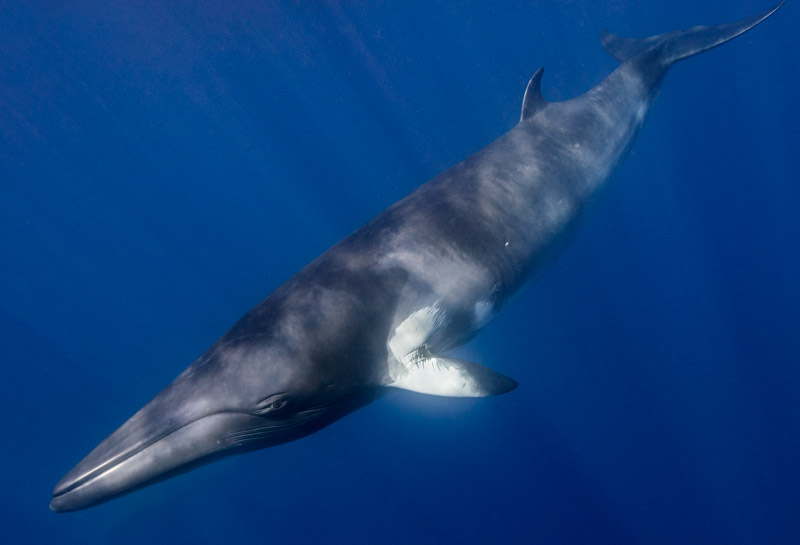
Dwarf Minke Whale
The Antarctic Minke is
Slightly larger than the Common and Dwarf Minke.
They do not have the dark throat or white shoulder patches.
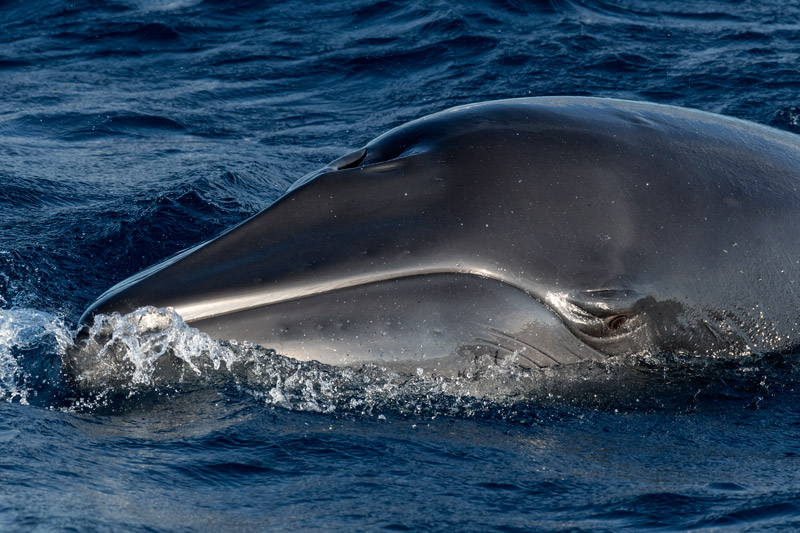
Dwarf Minke Whale
Field ID
– Dark grey in colour with light grey and white markings.
– Bushy shaped blow of about two meters height.
– Dolphin shaped fin on their backs.
– Triangular hump two thirds of the way along their backs.
– Tail fluke thick and triangular in shape
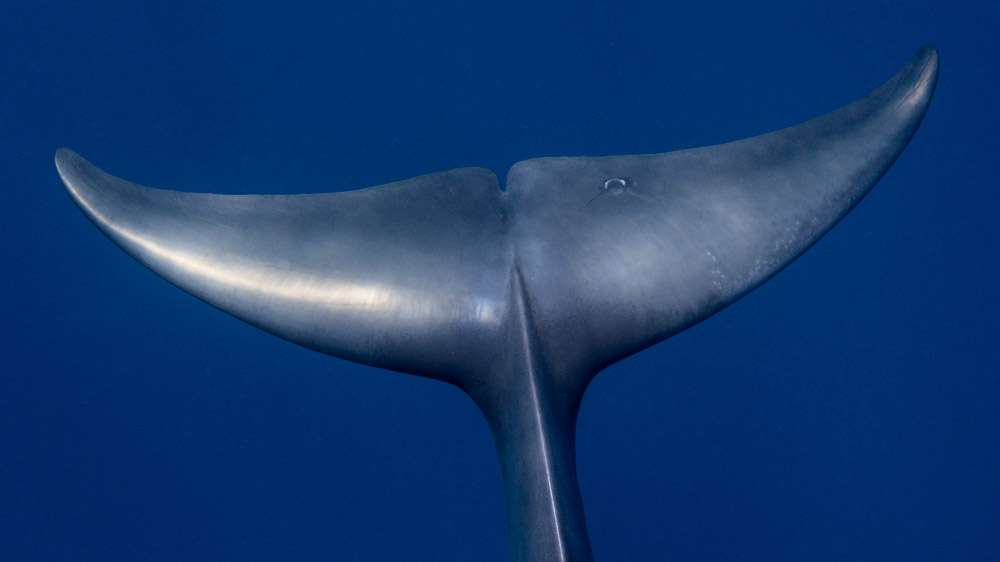
Dwarf Minke Whale Tail
Behaviour
Minke’s are highly active and manoeuvrable little whales that have been described as behaving more like Dolphins than whales.
Known to be inquisitive they will approach stationary boats and stay with them for hours. Surface activities include spyhopping and breaches. More unusual is when they occasionally swim on the surface for prolonged periods exposed from nose to fin, this has been called ‘motorboating’.
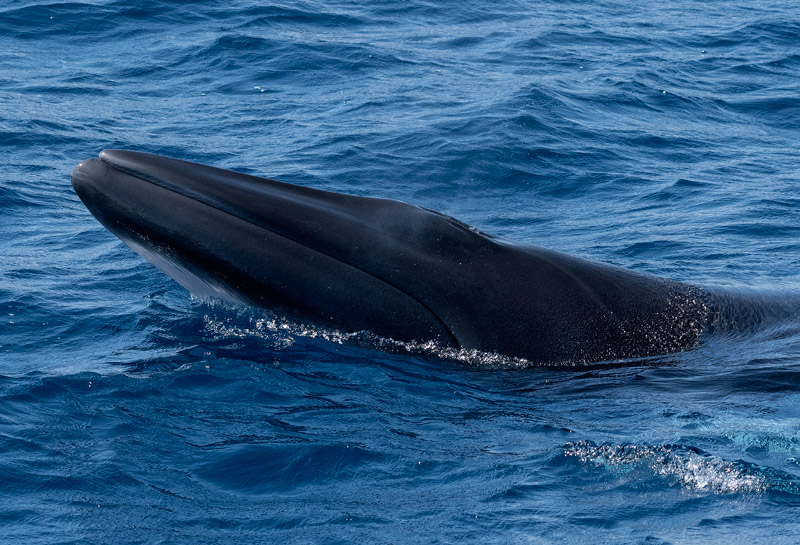
Dwarf Minke Whale ‘Motor Boating’
Underwater Dwarf Minke’s have been observed exhibiting a wide range of acrobatic behaviors such as loops, rolls, displaying their bellies, bubble blowing and opening their mouths. They can travel very fast (close to 40kph) for short periods.
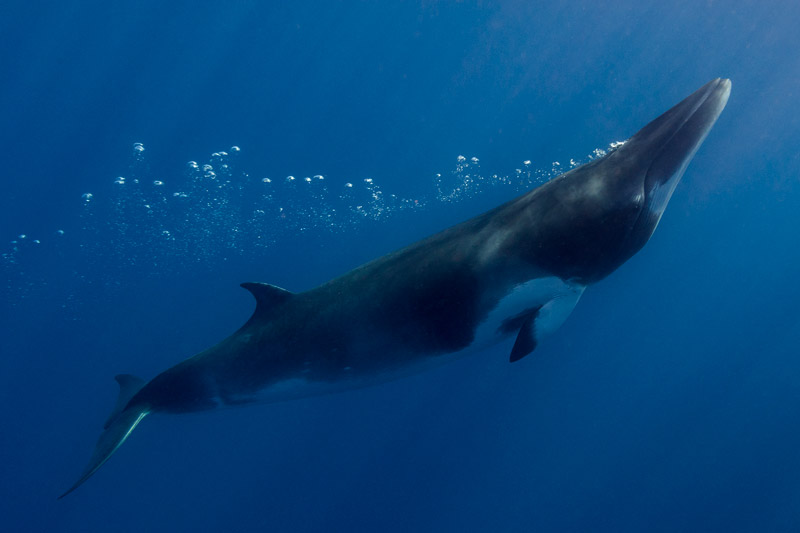
Dwarf Minke Whale ‘Bubble Blowing’
Minke are usually found travelling in pods of two to three.
Minke feed by side lunging into schools of Krill and fish.
Distribution
Like other whales it is believed that Minke whales migrate from the higher latitude Sub Arctic feeding grounds in summer months to more tropical waters to winter.
The migration habits and where Minke breading grounds are still not well understood.
My sincere thanks to Dr Matt Curnock
Research Officer – Minke Whale Project
James Cook University
for his generous advice and guidance in creating this page.
Minke Whale Project
Copyright 2020 David Jenkins – Whale Spotter

